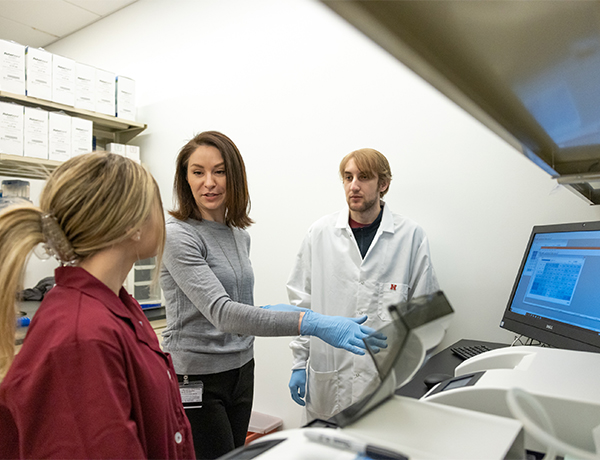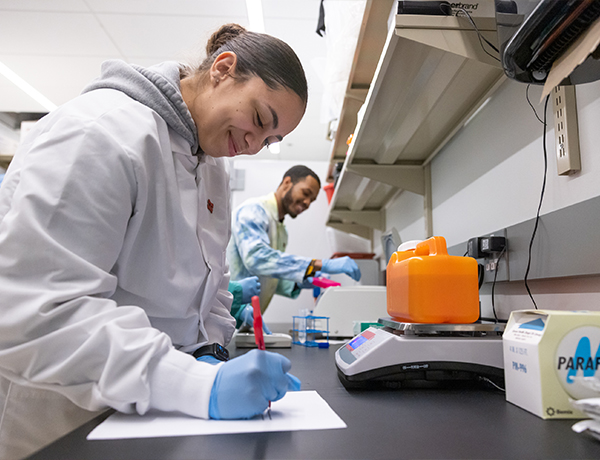

When water bottles rise to the level of pop culture trends, you might assume lots of people certainly drink enough H2O each day.
That’s not really the case, no matter how ubiquitous the travel mugs and tumblers are at work, on Zoom, and on social media. University of Hartford Professor Colleen Muñoz says most people’s water intake should be much higher than it is, as she works to elevate UHart’s reputation in the hydration research space.
Muñoz has just launched the Hydration Health Center at UHart with significant grant funding and ample opportunities for student research. The overarching goal is to determine how short- and long-term health is affected by drinking different amounts of water. Hearst CT Media recently wrote about the efforts.
In fact, UHart is now known across the U.S. for its hydration expertise and capabilities, and aiding other universities in tests and research. The new center, which will span a lab and under-renovation research space in Dana Hall, is one of just a few that exist at academic institutions.
“We’re here to study the relationship of water intake and health outcomes through state-of-the-art technology, and develop some practical tools along way,” says Muñoz, an associate professor of health sciences in UHart’s College of Education, Nursing and Health Professions. “We need to show what happens in healthy people so we can understand the relationships between water intake and health, and use water intake as a tool to help those with specific conditions across various age groups. We suffer tremendously from, and spend an unfathomable amount of money on, treating conditions that we now strongly believe can be prevented or mitigated through the simple act of drinking enough water. We believe our work can really make a difference.”
For UHart students, the center translates into real-world learning, as well as research opportunities that aren’t common at the undergraduate level. Students work with Muñoz each semester, as well as in the summer, to conduct studies, interview participants, draw and test blood, record data, and review and present results.
Colin Larkin ’23 found the opportunity invaluable, given his goal of attending medical school. He conducted hydration research with Muñoz during his undergraduate years and continued this summer as he prepares to work as a teaching assistant this coming academic year.
“I think it's something that every student should have the opportunity to do. I'm extremely thankful that I was able to do a senior honors project of the magnitude that it was and present at multiple conferences,” he says. “For any clinical profession (especially aspiring physicians), it’s important to have an understanding of the research process, network with members of the research and medical communities, and have an insight to potential clinical applications within different projects.”
Muñoz has received significant interest in her research, which has led to grants and other funding. This summer, an $90,000 grant from the Kraft Heinz Company is propelling a study conducted by Muñoz, colleague and co-Investigator Assistant Professor Linda Yamamoto, and a small team of UHart students on children and efficacy of rehydration beverages.
A $68,000 grant from the Drinking Water Research Foundation previously supported a fundamental UHart study involving 16 undergraduate researchers and 80 students volunteering as subjects, while a new $10,000 DWRF grant is aiding in the research center’s creation.
Niagara Cares, a charitable arm of Niagara Bottling, has provided $100,000 in funding, while also committing to matching an additional $150,000 in gifts. All of it will lead to more research, answers about health and chronic conditions, and student involvement.
“That’s what is so great about UHart. Students want to get into the research world to see if they like it, and so they will be marketable applicants for grad programs,” Muñoz explains. “For everybody and myself included, it fosters a sense of belonging on campus as they get involved. And it connects them to their didactic work, the things they’re learning in biology and chemistry classes, and they apply it to real-life scenarios.”